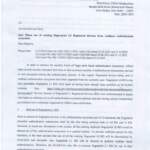Auto Sweep Facility in Banks: Maximizing Returns on Idle Funds
In today’s fast-paced world, managing finances efficiently is of utmost importance. One financial tool that has gained prominence over the years is the “Auto Sweep Facility” offered by banks. This innovative feature allows individuals to earn higher interest on their idle funds while maintaining liquidity. In this comprehensive article, we will explore the ins and outs of the auto sweep facility in banks, its benefits, how it works, and whether it’s the right choice for your financial needs.
Chapter 1: Understanding the Auto Sweep Facility
What is the Auto Sweep Facility?
The auto sweep facility, also known as an automatic sweep-in or sweep-out facility, is a banking feature that optimizes the utilization of idle funds in a savings or current account. It automatically transfers surplus funds beyond a specified threshold into fixed deposits or other high-yielding investment options offered by the bank.
How Does It Work?
When you open an account with an auto sweep facility, you set a minimum balance, often referred to as the “threshold” or “minimum balance requirement.” Any amount exceeding this threshold in your savings or current account is automatically moved into a fixed deposit or another investment vehicle, thus earning a higher rate of interest.
Benefits of Auto Sweep Facility
- Maximizing Returns: The primary benefit is that it allows you to earn higher interest on idle funds that would otherwise remain stagnant in your account.
- Liquidity: Despite moving funds into fixed deposits, you retain instant access to your money whenever you need it.
- Automatic Management: The process is entirely automated, eliminating the need for manual transfers or monitoring.
- No Extra Effort: You don’t need to open separate fixed deposits or investment accounts. The bank takes care of the entire process.
Chapter 2: How to Set Up an Auto Sweep Facility
Eligibility
Most banks offer the auto sweep facility to both individuals and businesses. Eligibility criteria may vary from bank to bank, so it’s advisable to check with your bank for specific requirements.
Activation Process
- Choose the Right Account: Ensure that you open a savings or current account that offers the auto sweep facility.
- Specify the Threshold: Decide on the minimum balance threshold. This is the amount below which funds will not be swept into investments.
- Link Investment Account: The bank will link your savings or current account with an investment option, usually a fixed deposit.
- Activation: Once your account is set up, the auto sweep facility is automatically activated.
Chapter 3: Investment Options in Auto Sweep Facility
Fixed Deposits
Fixed deposits are the most common investment option linked to the auto sweep facility. These deposits offer higher interest rates than regular savings accounts and are considered safe investments.
Recurring Deposits
Some banks may offer the option to link your account with recurring deposits, allowing you to save regularly and earn interest on your savings.
Short-Term Debt Funds
In some cases, banks provide the flexibility to invest idle funds in short-term debt funds or liquid funds, offering potentially higher returns than traditional fixed deposits.
Chapter 4: Interest Rates and Taxation
Interest Rates
The interest rates on auto sweep facility-linked fixed deposits or other investment options may vary depending on the bank, the tenure of the deposit, and prevailing market rates. It’s essential to check with your bank to understand the specific rates applicable.
Taxation
Interest earned from fixed deposits and other investments under the auto sweep facility is subject to income tax. Be aware of the tax implications and factor them into your financial planning.
Chapter 5: Pros and Cons of Auto Sweep Facility
Pros
- Higher Returns: Earn higher interest rates compared to a regular savings account.
- Liquidity: Retain instant access to your funds when needed.
- Effortless: The entire process is automated, requiring no manual intervention.
- Optimized Funds: Ensure that your money works for you even when not in active use.
Cons
- Threshold Requirement: Maintaining the minimum balance threshold can be challenging for some account holders.
- Tax Implications: Interest earned is taxable, reducing net returns.
- Withdrawal Limitations: While funds are accessible, there may be limitations on instant withdrawal from the fixed deposit.
Chapter 6: Is Auto Sweep Facility Right for You?
The suitability of the auto sweep facility depends on your financial goals, risk tolerance, and liquidity needs. Consider the following factors:
- Financial Goals: If you have surplus funds that you don’t require for immediate expenses and want to earn higher returns, the auto sweep facility can be a smart choice.
- Emergency Fund: Ensure that you maintain a separate emergency fund outside the auto sweep facility to cover unexpected expenses.
- Tax Planning: Consider the tax implications and consult a financial advisor to optimize your returns while minimizing tax liability.
Related Articles
FAQs – Frequently Asked Questions
<strong>What is an auto sweep facility in banks?</strong>
An auto sweep facility is a feature offered by banks that automatically transfers surplus funds in a savings or current account into higher-yielding investments like fixed deposits, maximizing returns.
<strong>How does the auto sweep facility work?</strong>
It works by setting a minimum balance threshold in your account. Any funds exceeding this threshold are automatically moved into an investment option like a fixed deposit.
<strong>What are the benefits of using the auto sweep facility?</strong>
The benefits include earning higher interest on idle funds, maintaining liquidity, effortless management, and no need for manual transfers.
<strong>Who is eligible for the auto sweep facility?</strong>
Most banks offer this facility to both individuals and businesses, but eligibility criteria may vary. Check with your bank for specific requirements.
<strong>How do I activate the auto sweep facility?</strong>
To activate it, open a savings or current account that offers the feature, specify a minimum balance threshold, link an investment account (usually a fixed deposit), and the facility will be automatically activated.
<strong>What investment options are typically linked to the auto sweep facility?</strong>
The most common option is fixed deposits. Some banks may also offer recurring deposits or short-term debt funds as investment choices.
<strong>What are the interest rates on investments under the auto sweep facility?</strong>
Interest rates may vary depending on the bank, deposit tenure, and market rates. It’s essential to check with your bank for specific rates.
<strong>Are the returns from the auto sweep facility taxable?</strong>
Yes, interest earned from investments under the auto sweep facility is subject to income tax. Be aware of the tax implications and plan accordingly.
<strong>What are the pros of using the auto sweep facility?</strong>
Pros include higher returns, liquidity, automation, and optimized use of idle funds.
<strong>Is the auto sweep facility suitable for everyone?</strong>
It depends on your financial goals, risk tolerance, and liquidity needs. If you have surplus funds not needed for immediate expenses and want higher returns, it can be a smart choice, but consider maintaining a separate emergency fund and tax implications.
<strong>Can I set my own minimum balance threshold for the auto sweep facility?</strong>
The ability to set your minimum balance threshold may vary from bank to bank. Some banks allow customization, while others have predefined thresholds. Check with your bank for specific details on customization options.
<strong>Is the auto sweep facility available for all types of bank accounts?</strong>
While the auto sweep facility is commonly available for savings and current accounts, it may not be offered for all account types. It’s essential to inquire with your bank regarding which account types are eligible for this feature.
Conclusion
The auto sweep facility in banks is a powerful tool to make your money work harder for you without compromising liquidity. By understanding how it works, its benefits, and its potential drawbacks, you can make an informed decision about whether it aligns with your financial objectives. In an era of financial empowerment, the auto sweep facility empowers you to maximize returns on your idle funds, contributing to your overall financial well-being.












